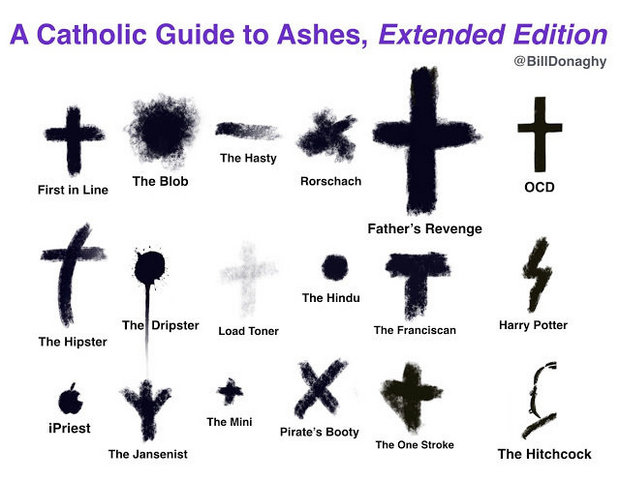ash wednesday etymology
this is not a true etymological post – more like an origin story. well, also some etymology.

being the good catholic girl i was, before i became a heathen, i made sure to make my way to ash wednesday, even though it is not a holy day of obligation (bet you didn’t know that!). i’d always assumed that ashes on your forehead were symbolically there because it was like dust, which is what they say when they cross the ashes. “remember you are dust, and to dust you shall return.” somehow this translates to “ashes to ashes; dust to dust” in my mind, which actually is an anglican prayer and never was in the bible.
the dust to dust thing comes from genesis: “In the sweat of thy face shalt thou eat bread, till thou return unto the ground; for out of it wast thou taken: for dust thou art, and unto dust shalt thou return.”
and ashes to ashes comes from the anglican prayer in this form: “Forasmuch as it hath pleased Almighty God of his great mercy to take unto himself the soul of our dear brother here departed, we therefore commit his body to the ground; earth to earth, ashes to ashes, dust to dust; in sure and certain hope of the Resurrection to eternal life…” etc. etc.
so really, there is no mention of ashes during ash wednesday – just dust. so where did the ashes come from?
a nice catholic website says they symbolize our mortality – somehow ashes=dust (hmmm). also that the tradition stems from the OT when sinners performed acts of public pennance. (were the ashes to let others know that these people were pennancizing?? not sure…)
but i like this explanation:
back in the early days of the bible, societies were pretty dependent on wood fires for everything – cooking, heating, etc. you have to keep the ashes in check when this is such a huge part of life. if a person was preoccupied with something big, say, a death or sickness or something pretty awful, the ashes and keeping clean of them were the least of their concerns.
ashes became a sign that you were in mourning or remorse or repentance. this is actually written more than once in the bible:
2 Samuel 13:19? “Tamar put ashes on her head and tore the ornate robe she was wearing. She put her hands on her head and went away, weeping aloud as she went.”
Esther 4:1-3: “When Mordecai learned of all that had been done, he tore his clothes, put on sackcloth and ashes, and went out into the city, wailing loudly and bitterly.
Jeremiah 6:26: “Put on sackcloth, my people, and roll in ashes; mourn with bitter wailing as for an only son, for suddenly the destroyer will come upon us.”
(there also seems to be a trend of sackcloths, as well, but i don’t see that making its way into ash wednesday services.)
so, it makes sense that during lent, when you are supposed to be subdued, fasting, repenting, and thinking about jesus dying for the sins of the world and all that jazz, that you start off by being remorseful with this traditional symbol.
i guess now the question is why does this need to be a public proclamation? from the background of this, the ashes were on your forehead because you were preoccupied. i’d guess you weren’t aware that you left the house covered with ashes, IF YOU WENT OUT AT ALL. those in mourning probably tended to stay at home. if you are truly remorseful, wouldn’t it be something personal and private instead of parading it around like a badge of honor? maybe that’s something to dig up another day.